4 Days Mexico city Itinerary
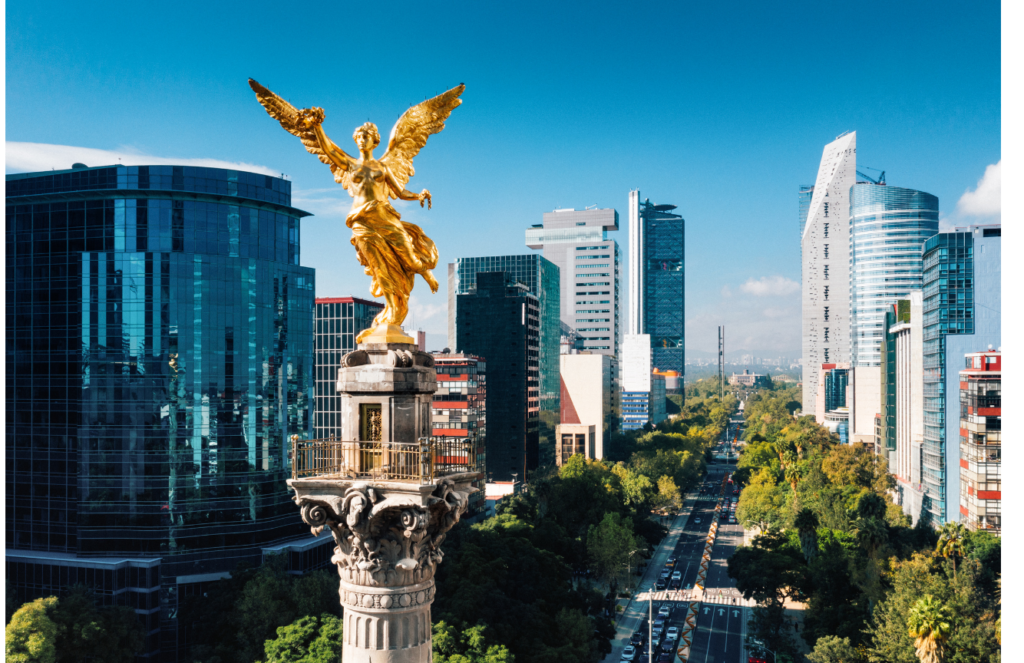
Planning to visit Mexico City but not sure where to go yet? Or wondering which places you must see when visiting this beautiful city? I’ll now give you the best Mexico itinerary for your trip. And if you’re still deciding where to stay, don’t miss our guide to the best hotels in Mexico City to find the perfect home base for your adventure.
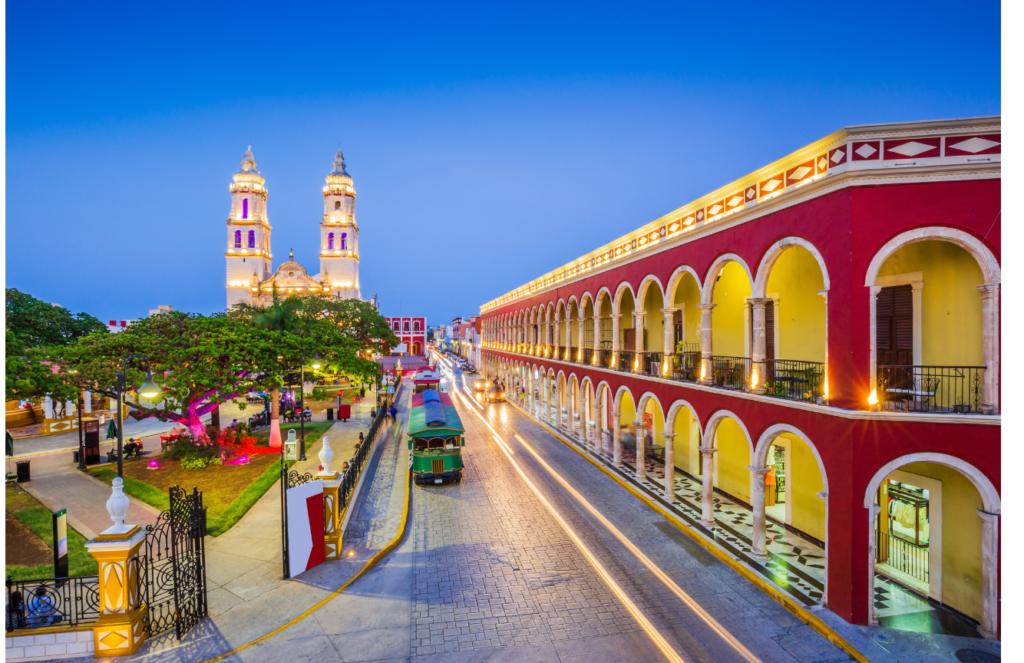
Things to know about Mexico City
- Mexico City is safe, but it’s always best to follow standard precautions, like being cautious with valuables and staying aware of your surroundings.
- Public transport is very affordable and efficient—you can get almost anywhere you want.
- You can also use Uber to get around, and it’s better than local taxis because you already know the price beforehand, avoiding the need to negotiate.
- You’ll need around $125 per person per day, which includes accommodation, food, transportation, and activities.
- Getting a local SIM card could be useful.
- Tap water is not drinkable, so carry a bottle with you.
- Tipping is not mandatory, but it’s expected.
Day 1: Historic Center

Palacio de Bellas Artes
Also known as the “Cathedral” of Art in Mexico, it was declared an artistic monument by UNESCO in 1987. The exterior is made of white marble with beautiful sculptures, while the inside has amazing murals and pre-Hispanic designs. This palace is the most famous cultural landmark in Mexico City and is a must-visit when you come to this city. Palacio de Bellas Artes is open from Tuesday to Sunday, from 11 AM to 5 PM, with free admission on Sundays; otherwise, it normally costs 75 Mexican pesos (around $4.50).
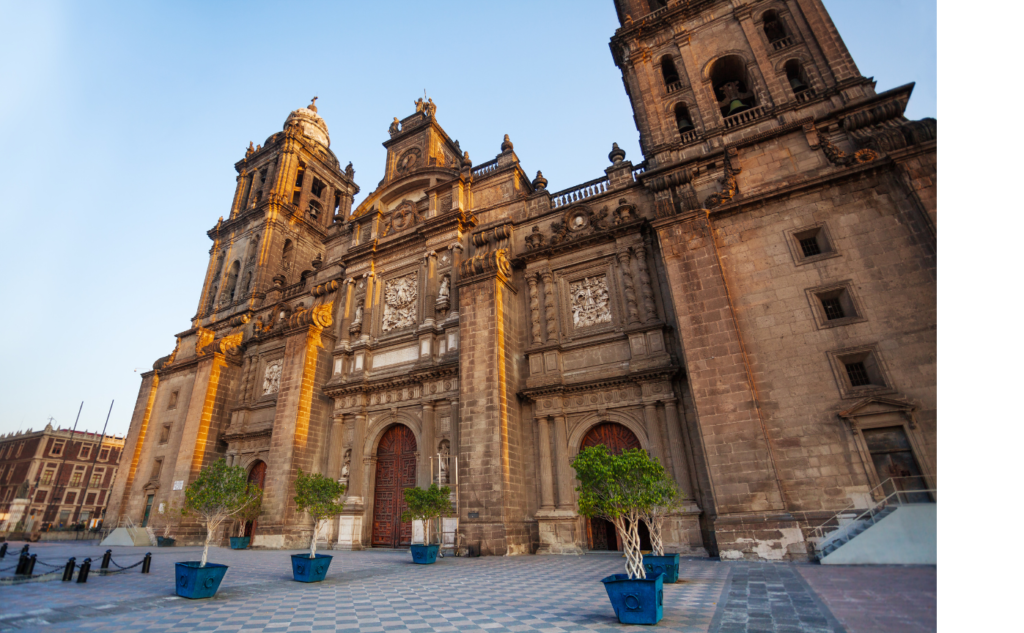
Metropolitan Cathedral
Built between 1573 and 1812, the cathedral was placed on top of the Aztec Templo Mayor. Over time, architects added different styles to it, resulting in a mix of Renaissance, Baroque, and Neoclassical designs. The cathedral remains an important place for religion, politics, and protests. It stands as a powerful symbol of Mexico’s history and culture.
As a major religious and tourist attraction, visitors can take guided tours, climb the bell tower, and attend Mass. It is located in Zócalo, the city’s main square. Inside, you’ll find the gold-covered Altar de Perdón and Altar de los Reyes. Below the cathedral lies a crypt that holds the remains of past church leaders. Rumor has it that hidden tunnels lead to Aztec ruins beneath the site.

Templo Mayor
Templo Mayor was the main temple of Tenochtitlán, the Aztec capital, built in 1325. It was dedicated to Huitzilopochtli (god of war) and Tlaloc (god of rain). The temple was rebuilt six times and once stood 60 meters high, but after the Spanish conquest in 1521, a cathedral was built over it.
Today, the Templo Mayor Museum showcases a model of Tenochtitlán, and ongoing excavations continue to reveal new discoveries. Major finds include a sacrificial platform (2011), a tower of 650 human skulls (2017), and the burial sites of a boy dressed as Huitzilopochtli and a jaguar warrior (2019). It’s a must-visit for history and archaeology lovers, offering a glimpse into Mexico’s rich Aztec past.

Madero Street
Originally called Calle de San Francisco, the street was renamed Calle de Plateros in 1730. After the Mexican Revolution, it became Avenida Francisco I. Madero, honoring the revolutionary leader. In 2010, it was transformed into a pedestrian-only street, making it a lively hub filled with history, culture, shopping, and food.
Here, you can experience museums, historic buildings, shops, cafés, and street performances—this street has it all! With so many things to see and do, it’s highly recommended to take your time exploring.

Head up for panoramic views of Mexico City!
Torre Latinoamericana is one of the most iconic skyscrapers in Mexico City, standing 182 meters tall. Completed in 1956, it was the city’s tallest building until 1982. The tower is famous worldwide for being a seismically resilient skyscraper, having withstood major earthquakes in 1957, 1985, and 2017.
On the 44th floor, the tower offers a 360° view of the city. It is open from 9 AM to 10 PM, and entrance costs $170 MXN for adults and $100 MXN for children. The best time to visit is during sunset for breathtaking city views.
Dinner Suggestion: Azul Histórico
A Mexican restaurant located between Madero Street and 16 de Septiembre, Azul Histórico is found on the ground floor of Plaza Downtown.
With a 4.4/5 rating (9.2k reviews), visitors often praise its delicious Mexican cuisine, excellent service, and great atmosphere.
Day 2: Chapultepec Park & Museums

Chapultepec Castle – A must-see historic castle with incredible views.
Chapultepec Castle stands on Chapultepec Hill at 2,322 meters above sea level. Originally built as a summer home for Spanish viceroy Bernardo de Gálvez, it later served as a military academy, imperial residence, presidential home, observatory, and finally became the National Museum of History in 1944.
Today, the museum showcases art, documents, furniture, and more from Mexico’s past. It also covers major events like the fall of Tenochtitlán and the Mexican Revolution. Additionally, it hosts concerts, conferences, and cultural events. The opening hours are Tuesday to Sunday, from 9 AM to 5 PM.

National Museum of Anthropology – One of the world’s best museums for pre-Hispanic culture.
This is the largest museum in Mexico City and also the most visited museum in Mexico, attracting 2 million visitors annually. The museum holds the world’s most extensive collection of Mexican artifacts.
Opened in 1964 and designed by architect Pedro Ramírez Vázquez, the museum has 23 permanent exhibit halls divided into two sections:
- Archaeology – Featuring must-see pieces like the Aztec Sun Stone and Pakal’s Tomb, among many others.
- Ethnography – Showcasing the traditions and daily life of present-day Indigenous groups in Mexico.
The museum is open Tuesday to Sunday, from 9 AM to 5 PM, but it’s best to avoid Sundays as it gets crowded.

Chapultepec Park – Relax and explore the park’s greenery and attractions.
Chapultepec Park is Mexico City’s largest park and is also considered one of the oldest city parks in the world, dating back to Aztec times. Originally built for rulers, today it is home to major museums, lakes, gardens, and even a zoo.
The park is divided into four sections:
- Cuarta Sección (New Cultural Center)
- Primera Sección (Historic Area)
- Segunda Sección (Entertainment & Museums)
- Tercera Sección (Nature & Wildlife)
Dinner: Pujol
Founded by Chef Enrique Olvera in 2000, Pujol has won multiple awards and global recognition, consistently ranking among the World’s 50 Best Founded by Chef Enrique Olvera in 2000, Pujol has won multiple awards and global recognition, consistently ranking among the World’s 50 Best Restaurants. It has also earned two Michelin stars and is considered one of the best restaurants in the Americas.
Their signature dishes include:
- Mole Madre, Mole Nuevo
- Baby Corn with Chicatana Ant Sauce
- Tlayudas
- Aguachile & Lobster
Pujol’s cuisine is known for constant transformation and is centered on three key elements of Mexican culture: corn, seafood, and vegetables.
⚠️ Important: Reservations must be made 5–7 weeks in advance. Prices are premium, but there is no dress code required for dining.
Day 3: Teotihuacán Pyramids (Day Trip)
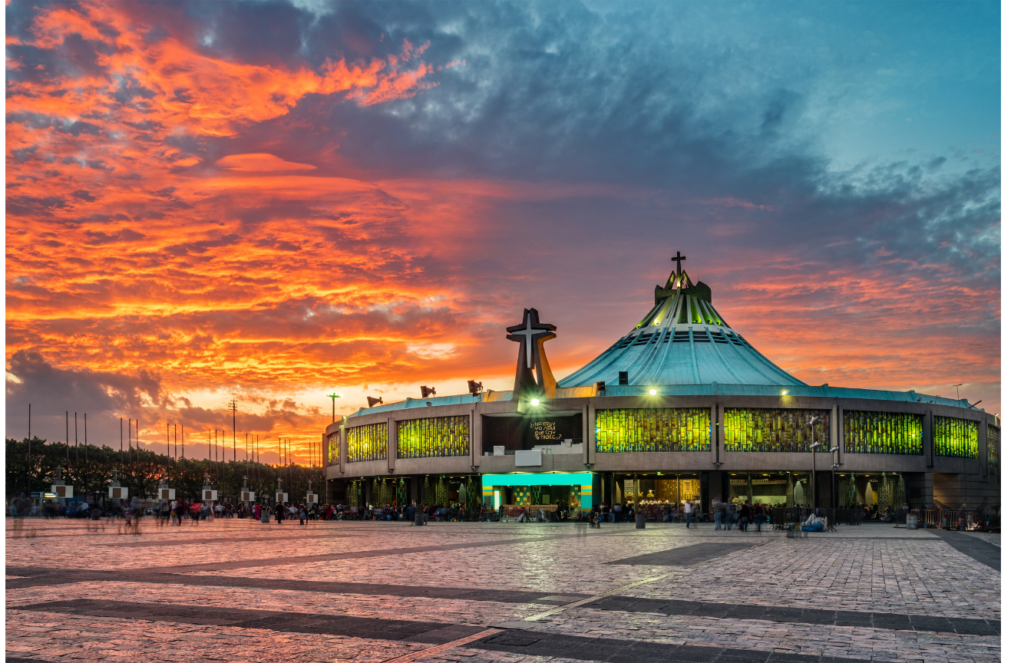
Basilica of Our Lady of Guadalupe (Morning) – Visit Mexico’s most important religious site.
The Basilica of Our Lady of Guadalupe is a cultural landmark that represents faith, identity, and resilience. Not only is it significant in Mexico City, but it is also the most visited Catholic pilgrimage site in the world, attracting millions of believers every year.
This basilica was built in honor of the Virgin Mary. The story behind it begins with Juan Diego, who claimed to have seen the Virgin Mary and was instructed to tell the bishop to build a church for her. The bishop asked for a sign, and the Virgin filled Diego’s cloak (tilma) with her image.
What makes this tilma special is that it is made of cactus fiber, which should have disintegrated within 50 years, yet it has remained intact for nearly 500 years. Even after exposure to smoke, incense, and environmental conditions, the image has not faded.
The Virgin of Guadalupe has played a major role in Mexico’s history and has become a symbol of unity and resilience. During the Mexican War of Independence in 1810, Miguel Hidalgo used her image as a banner, and in the Mexican Revolution in 1910, revolutionaries carried her image into battle.
The basilica has free admission and is open daily from 6 am to 9 pm.
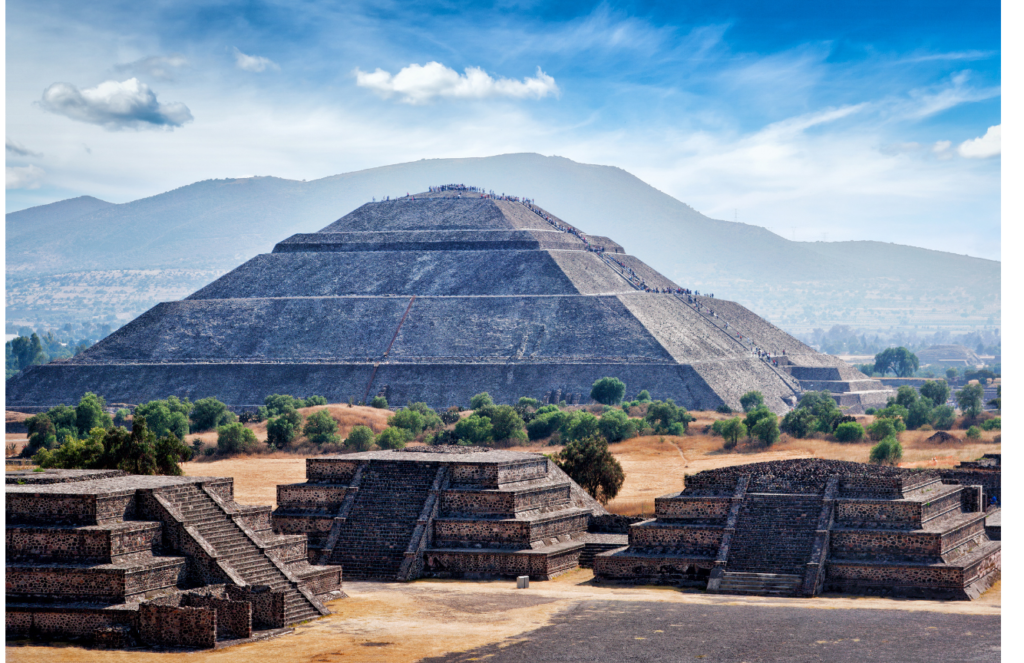
Teotihuacán Pyramids – Walk the Avenue of the Dead and climb the Pyramid of the Sun.
Teotihuacán means “The Place Where the Gods Were Created,” a name given by the Aztecs. They believed this was where the gods sacrificed themselves to set the Sun and Moon in motion, marking the dawn of the current era.
This ancient site features several major landmarks:
- The Avenue of the Dead is the central axis of the city, stretching 1.5 miles and lined with monumental structures. These buildings were once elite residences and religious complexes.
- The Pyramid of the Sun is the third-largest pyramid in the world, standing 66 meters tall with a 220–230 meter base.
- The Pyramid of the Moon was believed to have been dedicated to the Great Goddess of Teotihuacán. It offers a great view of the site.
- Palacio de Quetzalpapálotl is one of the most beautifully decorated structures and is a must-visit for those interested in Teotihuacán’s artistic legacy.
The pyramids are open daily from 9 am to 5 pm, and the entrance fee is $4. The best time to visit is on weekdays in the early morning to avoid crowds and the midday heat. It is recommended to bring a hat and water since there is very little shade.
Lunch Option: La Gruta Restaurant (Dining in a cave near Teotihuacán, optional).
You can have lunch at La Gruta Restaurant, which is located inside a naturally formed cave just outside the Teotihuacán Pyramids.
While enjoying your meal, you can also watch Mexican folk and pre-Hispanic dance shows on weekends. This unique restaurant has hosted high-profile visitors such as Frida Kahlo, Diego Rivera, and Queen Elizabeth.
The prices here are expensive, but it is worth it. The restaurant closes at 5 pm, so plan accordingly.
Return to Mexico City for a Relaxed Evening
After all the walking, you are probably tired—it would be a good idea to relax and unwind for the evening.
Day 4: Coyoacán & Xochimilco

Frida Kahlo Museum (Casa Azul) – Explore the iconic home of Frida Kahlo.
The Frida Kahlo Museum, also known as Casa Azul, is both a house and an art museum. Casa Azul was Frida Kahlo’s birthplace and childhood home, as well as the residence she shared with Diego Rivera. Later, it was converted into a museum.
The museum showcases her belongings, artwork, Mexican folk art, pre-Hispanic artifacts, and memorabilia. Visitors can explore the ten-room house, preserved as it was in the 1950s, including her studio, bedroom, kitchen, and living spaces. Highlights of the house include her wheelchair, art supplies, and unfinished works.
The museum offers a glimpse into the life of one of Mexico’s most celebrated artists.
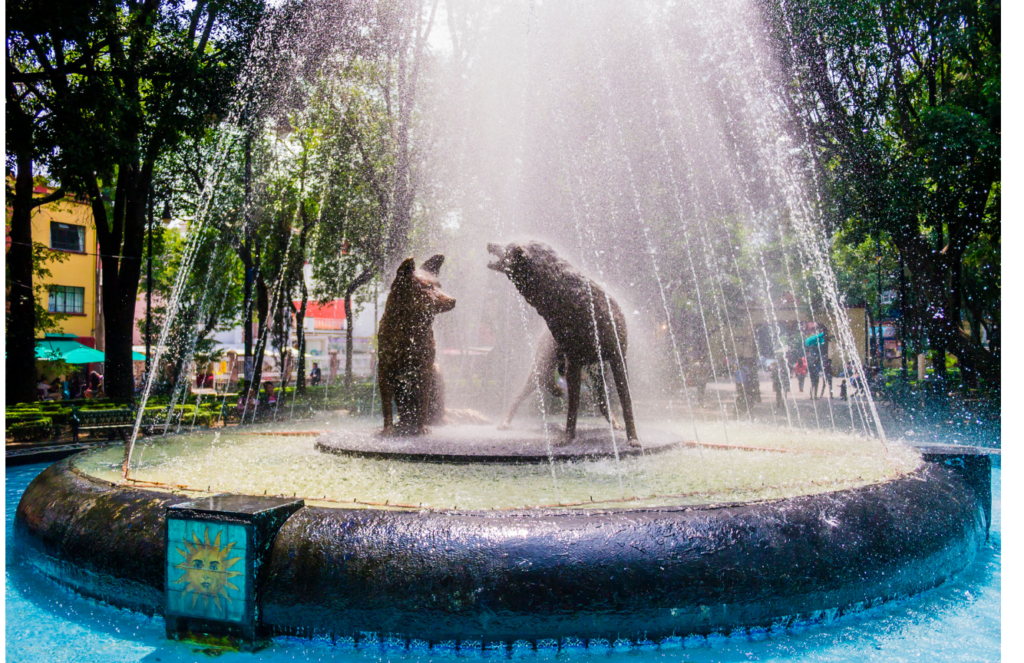
Coyoacán Market – Try local street food like churros and tostadas.
Right after visiting the Frida Kahlo Museum, you should visit Coyoacán Market. It is located in the Coyoacán neighborhood and is a popular stop for both locals and tourists. Established in 1921, this market offers a mix of traditional Mexican food, fresh produce, and unique trinkets.
The market is famous for tostadas, topped with seafood, mushrooms, shredded meat (tinga), beef or pork shank (pata), and vegetables. Other foods to try include quesadillas, fresh salsa, and drinks like jugo verde, which are commonly sold at stalls.
It is best to visit on weekends when Coyoacán is lively with locals and visitors, but if you prefer a quieter experience, go on weekdays to avoid the crowds. By visiting this market, you can get a small glimpse into everyday Mexican life.
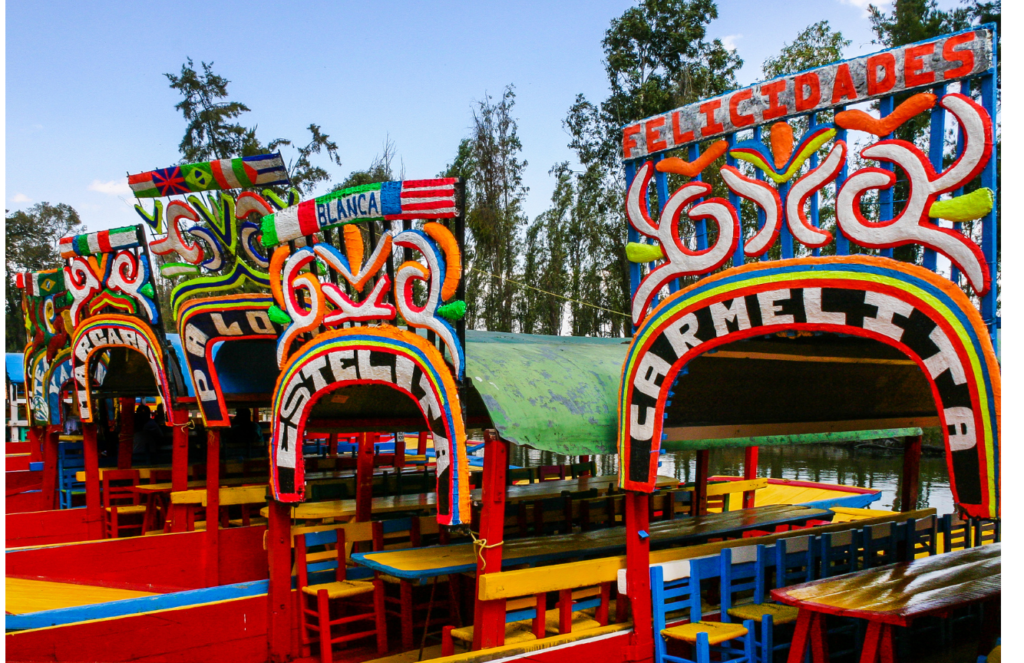
Xochimilco Boat Ride – Experience the colorful trajineras on the canals.
Originally built by the Aztecs for transportation, Xochimilco is now a UNESCO World Heritage Site and a must-visit attraction in Mexico City. Visitors can float along the canals in colorful trajineras, offering a festive and lively experience. These boat rides often feature live mariachi bands, food vendors, and groups celebrating special occasions.
A trajinera can hold up to 18 passengers and costs around $35 per hour. Smaller boats are also available for the same price. You can buy tacos or traditional snacks while on the boat.
There are a few important rules to follow, such as no jumping between boats and keeping trash on board. A Xochimilco boat ride is one of the best cultural experiences in Mexico City.
Final Though
This four-day itinerary covers the city’s most iconic attractions. Whether you are interested in history or culture, Mexico City has something for everyone. Walk through the historic streets of the city center or float along the canals of Xochimilco. Plan your trip well and immerse yourself in everything Mexico City has to offer. Enjoy your adventure!
